During the holidays, consumers will notice a wider variety of fancy tins, which comprise several types of metal containers for food such as chocolate, sweets and confectionery. Fancy tins are also common with cosmetics products and many other products throughout the year. Here are important points for packaging designers who are entering the colorful and artistic world of fancy tins.
Standing Out with Decorative Art
The main characteristic of a fancy tin is that it stands out due to a special, memorable design. The design of fancy tins is often focused on an occasion or target group.
Seasonal Positioning
The main goal in designing fancy tins during the Christmas holiday season is to stand out while using red, gold and green colors.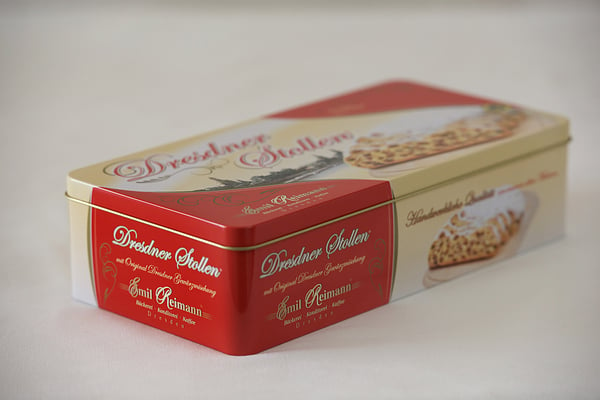
Any other color can be part of holiday fancy tin packaging, although traditional Christmas colors are generally favored when it comes to candies that are intended to add to holiday festivities. The challenge for graphic designers is to mix in visual elements such as snowflakes, stars and trees in a creative way.
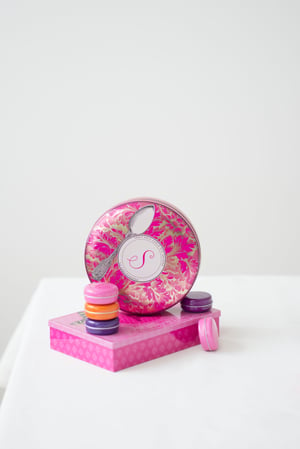
The marketer can adapt his goods on many other seasonal occasions such as Easter, Halloween, Valentines Day, Thanksgiving and so on.
Special Occasions for Fancy Tins
There are many occasions for fancy tins and resulting designs. The anniversary of a producing company for instance ("50 years of temptation"). But it also suits for a luxury positioning, which is then valid throughout the year.
Luxury and Quality Positioning
One of the primary benefits of tinplate or several other metals as a packaging material is that it allows for good quality printing on the surface. Different colors can be used on metal and project an attractive appearance. Tinplate or aluminium are shiny and look strong, along with actually providing excellent protection of chocolates and other food products.
Why Tinplate and Aluminum are a Strong Choice
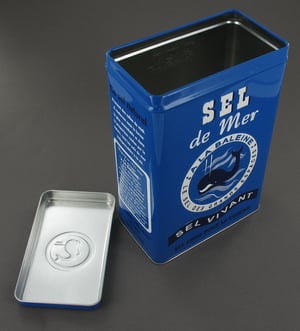
The concept of fancy tins (tinplate or aluminum) plays into a mix of eye-catching aesthetics and robust packaging that protects food from air, moisture and light.
It's a better choice than pure iron, which rusts from moisture. We use the word tin or tins as synonym for metal containers. In our definition of the term, it includes tinplate and aluminium based based packaging.
Tins in the form of cans, boxes and other containers, are a top choice for food packaging because they are reliable at blocking out environmental elements that threaten to degrade the food.
Tinplate or aluminium are simply a strong barrier that preserves taste, texture and aroma of the food, as well as protecting it from bacteria. Metal containers are made to be air-tight, making them durable for long-term storage, giving them a longer shelf life. The fact that tins are recyclable adds to their popularity in the holiday season, when people think more about helping others. Another advantage to metal is that it allows food to be preserved without the use of chemical preservatives. Shapes such as stars, hearts or anything imaginable can be easily made from laser cutting machines.
Getting Imaginative with Fancy Tins
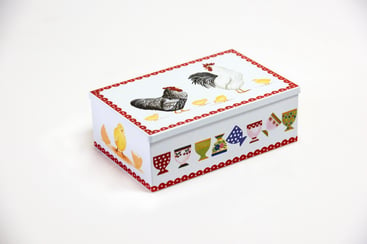
Christmas is a period when packaging designers can experiment within the boundaries of tradition. Consumers are looking for unique gifts that can be perceived as special. Small round and square containers are common for candies.
Now that online shopping has become widespread, fancy tins make increasingly more sense every year, since the lower weight helps reduce shipping costs, while the packaging still retains a creative edge.
Part of the charm of fancy tins is that they take into account both economics and aesthetics in an efficient way. Tinplate and aluminium are affordable materials that help lower the manufacturer's cost of the product and it's useful for any type of design due to its flexibility.
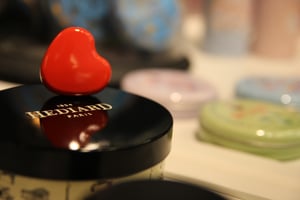 The use of "biscuit tins" traces back to the 19th century in Great Britain, in which steel sheets of thinly coated tin have been used to preserve biscuits. The Licensed Grocer's Act of 1861 opened the door for food to be individually packaged and sold in Britain.
The use of "biscuit tins" traces back to the 19th century in Great Britain, in which steel sheets of thinly coated tin have been used to preserve biscuits. The Licensed Grocer's Act of 1861 opened the door for food to be individually packaged and sold in Britain.
By the end of the century new lithography technology allowed for direct printing on tinplate and aluminium.
3 Main Occasions for Fancy TinsExotic designs for biscuit tins, including those with unique shapes, began to appear in the early 20th century.

Since then packaging designers have expanded the concept beyond both biscuits and holiday sweets, using fancy tins to capture attention throughout the year for consumers who have learned the importance of tin's qualities for long-term storage.
Fancy tins serve 3 main occasions:
- luxury or outstanding positioning
- seasonal positioning
- special occasions.
The design should serve the goal without neglecting the corporate design of the brand. That may be challenging, but can lead to outstanding heights. I am sure if you close your eyes, and think back to your childhood, you will remember some special tins.
Fancy tins are special canvas for memories. Let us build on it.
Read more about Marketing with Fancy Tins ...
References
- More articles on Fancy Tins (2018 - today), by Alex Cosper et al.
- “My Grandfather kept one of these tins on top of the bookshelf”: Consumers’ recalled experiences involving packaging (2016), by Toni Ryynänen , Markus Joutsela , Visa Heinonen
Qualitative Market Research, ISSN: 1352-2752






